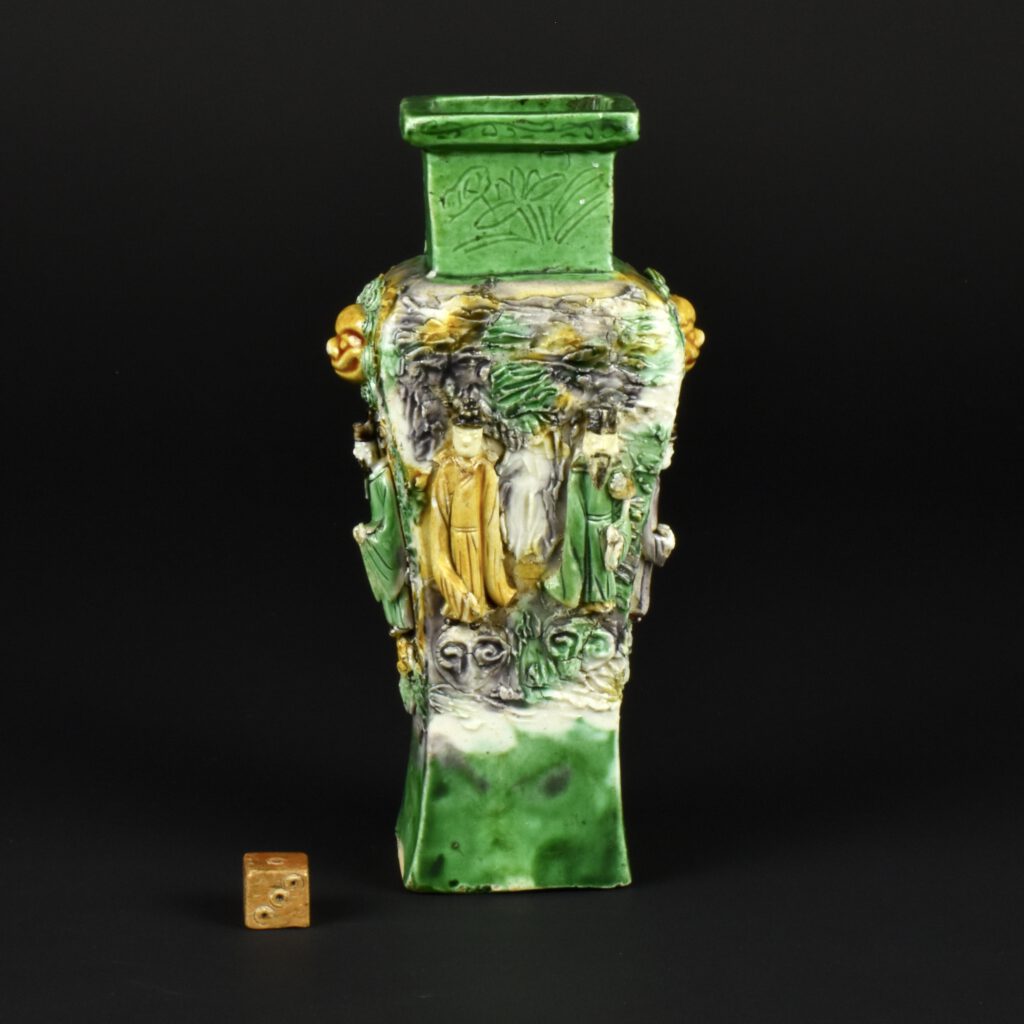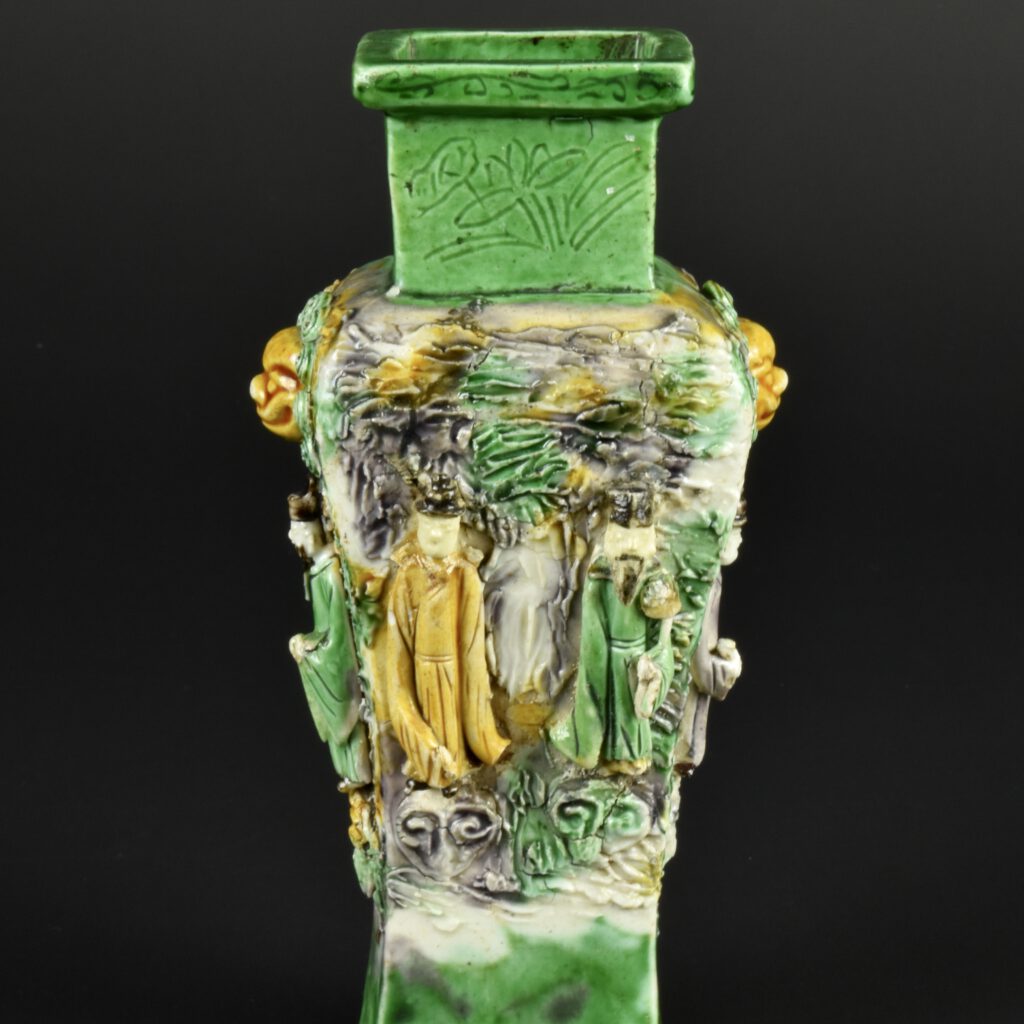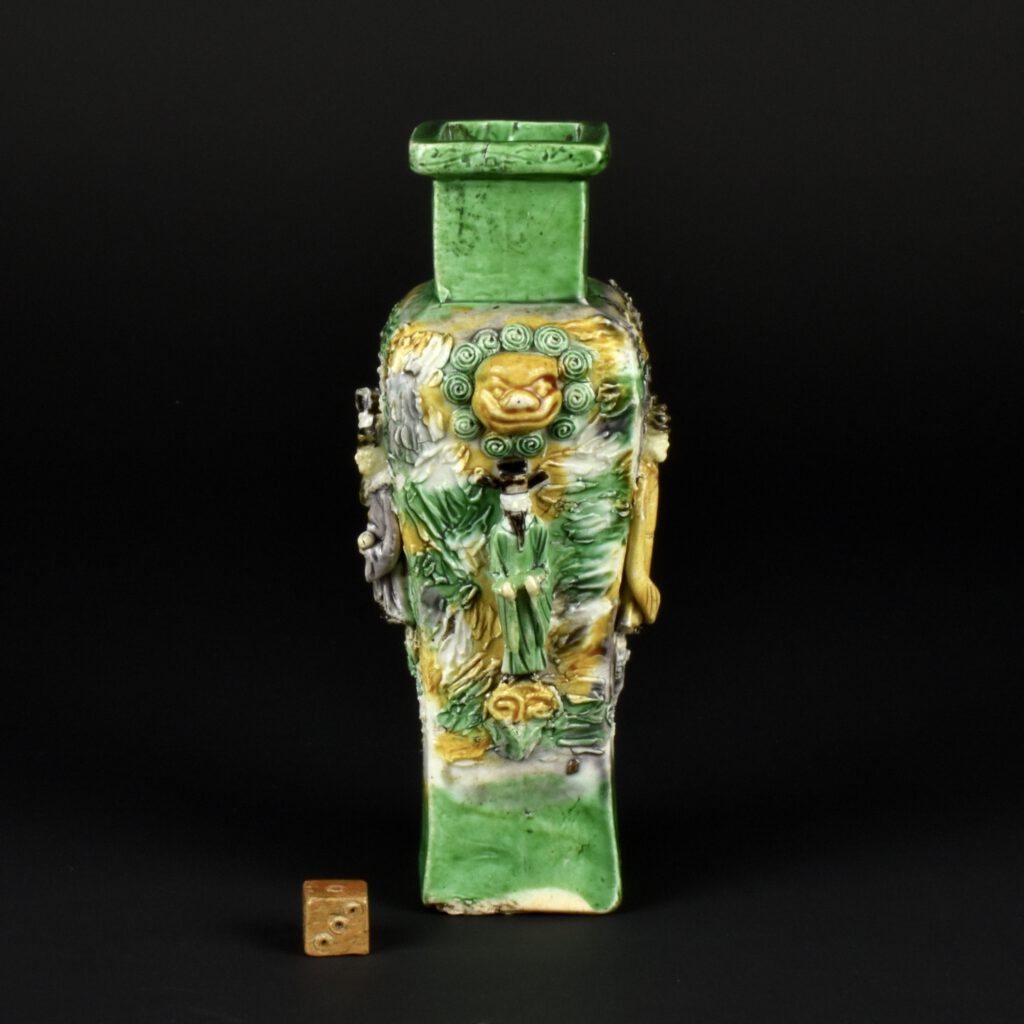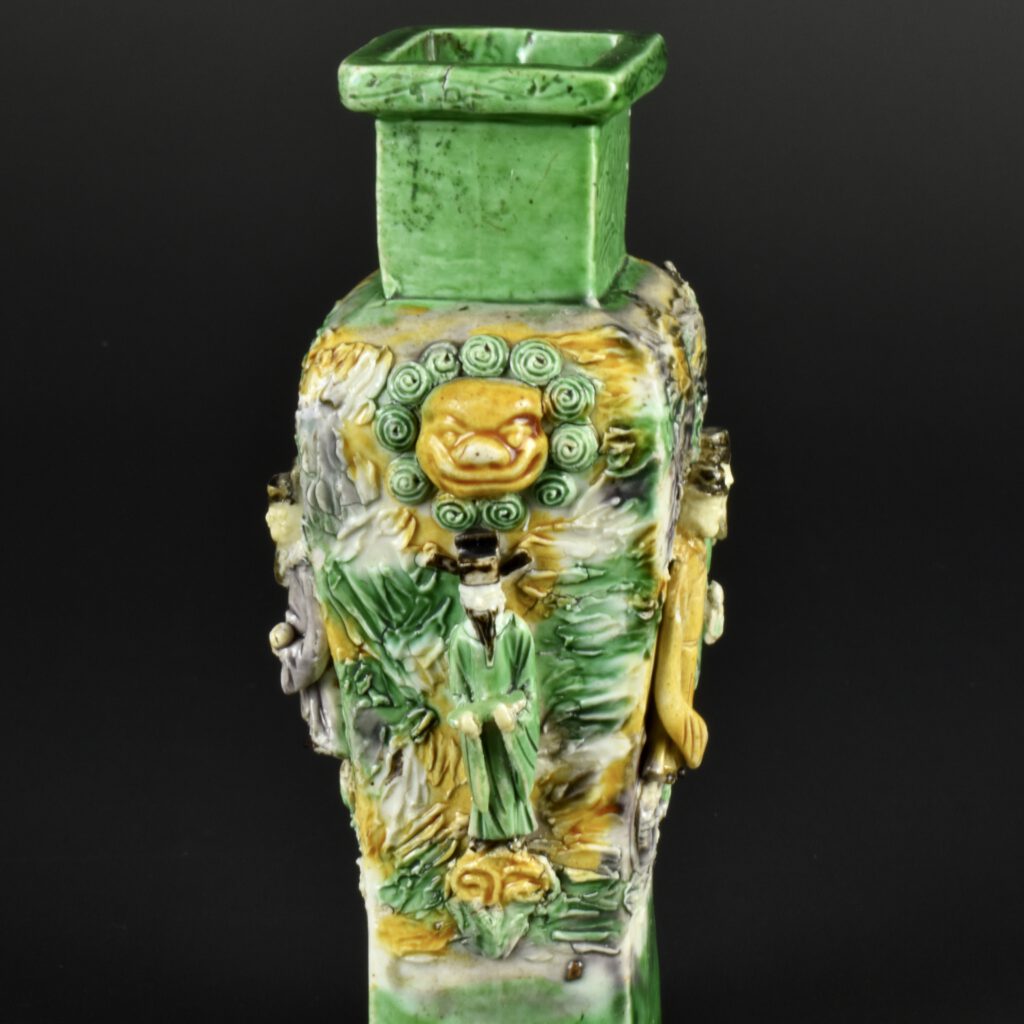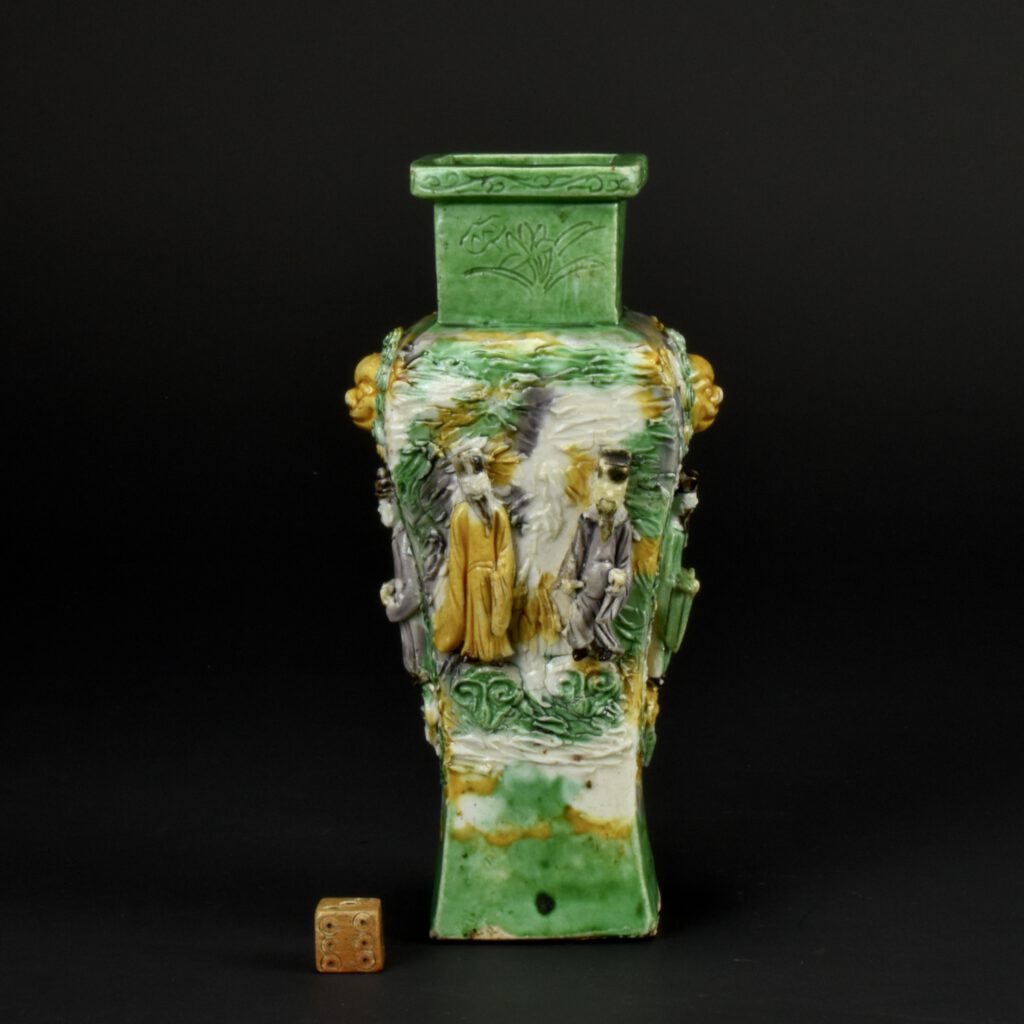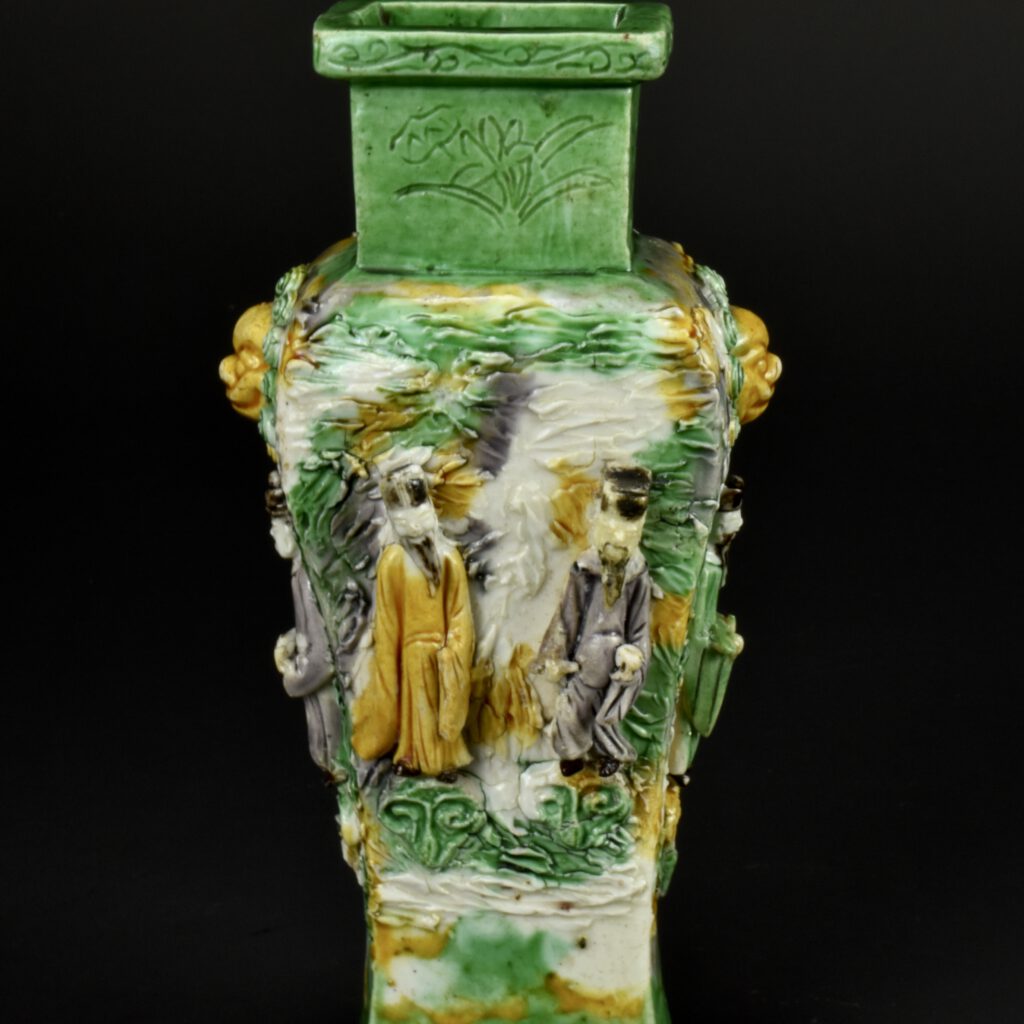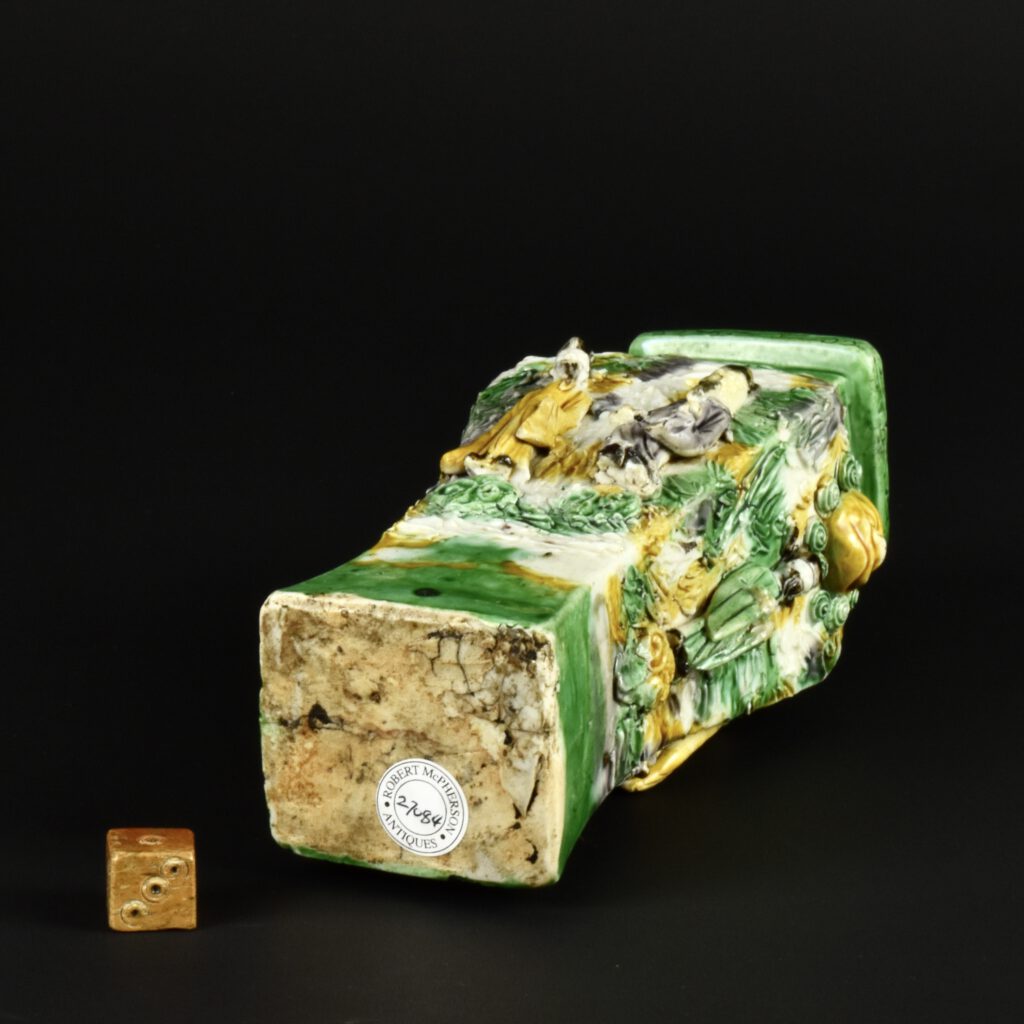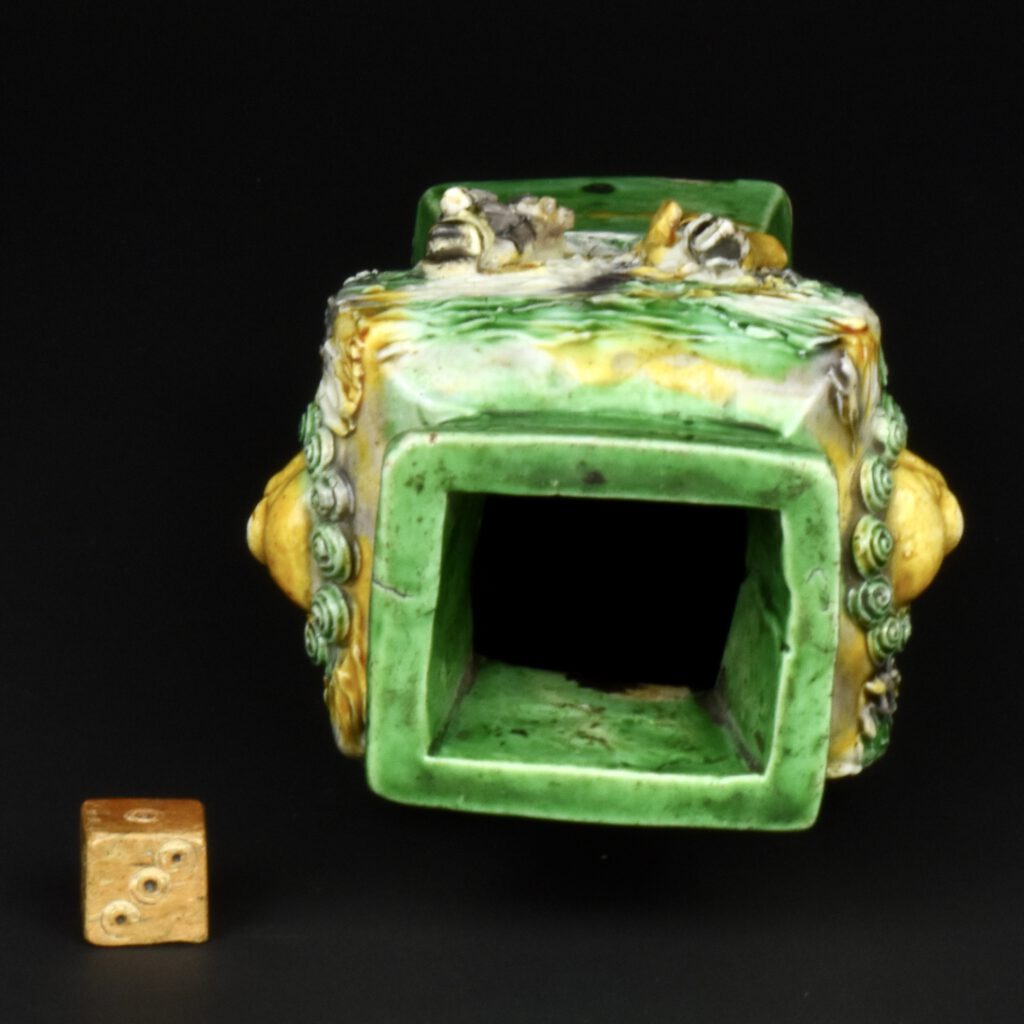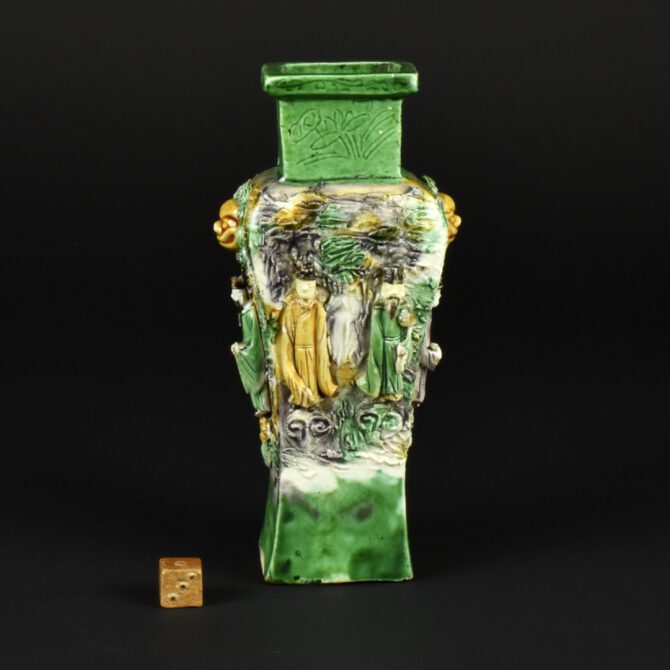
Rare Kangxi Biscuit Famille Verte Porcelain Vase
A Rare Kangxi Biscuit Porcelain Famille Verte Vase, Kangxi period (1662-1722). Vases of this type are rare, this decoration can occasionally be found on Kangxi biscuit porcelain censers. This square section Egg and Spinach vase has two Buddhist Fu dog roundels, and a central panel, which is in essence impasto. That is to say, it has added rough texture, with the appearance of cut marks. Closer examination shows this has been achieved by applying small strips of clay to the surface, and then a tool has been pressed into the surface. This effectively leaves two jagged lines of clay protruding from the surface. Over this rusticated ground six Immortals have been applied, they are probably hand-modelled. Each of these Immortals stands on a ruyi shaped applied plaque. The main part of the vase is glazed with a translucent green, the rough impasto is glazed in green, aubergine and mustard yellow. These colours, together with the clear glazed porcelain in white make up the palette know as. Egg and Spinach relate closely to Tang Sancai pottery of the 8th century (see below for more information). The collar of the neck has been incised with lotus, the flarred rim has incised scrolling foliage. The base is flat and left rather rough.
See Below For More Photographs and Information.
SOLD
- Condition
- In good condition. Three of the small six immortals have their heads restored. One immortal has had his hands and the object he is carrying restored, one has a section of his robe restored.
- Size
- Height 15.5 cm (5 3/4 inches)
- Provenance
- N/A
- Stock number
- 27084
Information
The Eight Immortals :
The Eight Immortals are a group of legendary Xian, immortals or transcendents in Chinese mythology. Each Immortals power can be transferred to a power tool that can give life or destroy evil. Together, these eight tools are called `Covert Eight Immortals`. Most of them are said to have been born in the Tang Dynasty or Song Dynasty. They are revered by the Taoists, and are also a popular element in the secular Chinese culture. They are said to live on Penglai Mountain-Island.
The Eight Immortals are :
Immortal Woman He (He Xiangu),
Royal Uncle Cao (Cao Guojiu),
Iron-Crutch Li (LiTieguai),
Lan Caihe,
Lü Dongbin,
Philosopher Han Xiang (Han Xiang Zi),
Elder Zhang Guo(Zhang Guo Lao),
Zhongli Quan.
Egg and Spinach Decoration
This is another of those Western terms used to categorise Chinese ceramics. Unlike many other terms the West has applied to Chinese porcelain, for example Kraak ware or Transitional porcelain, this one is more straightforward and less contentious. The group is characterised by the enamel decoration being directly on to the unglazed `biscuit` porcelain body, it is possibly more correct to describe this as a stained glaze rather than an enamel. The piece was then finished with a clear glaze. Egg and Spinach relate closely to Tang Sancai pottery of the 8th century, these lead glazed ware also have colours that run into one another. The blotchy enamel colours of Egg and Spinach consist of a rich green, a brownish aubergine and yellow with areas of body colour showing through the clear glaze (no doubt created by wax resist). This type of decoration could sometimes include areas, for example the interior of a bowl, decorated in blue and white. These pieces appear to date to the early 18th century rather than earlier. Egg and Spinach itself was popular in China from the Transitional period of the middle of the 17th century until the second quarter of the 18th century. In my view most of the Egg and Spinach was produced in the early 18th century but the literature often suggests an earlier date. Clearly the pieces with blue and white decoration relate to closely to late Kangxi and Yongzheng porcelain. The Ca Mau Cargo had many small pieces with Egg and Spinach decoration, this wreck dates to the Yongzheng period (1723-1735). Indeed most pieces with this distinct colour scheme were small. Egg and Spinach was used in the 19th century, many of these objects were copies of, or at least based on, the original 17th and 18th century examples. In late 19th and early 20th century Europe it was wildly collected, often with other biscuit decorated Chinese porcelain, collectors such as Mrs. Nellie Ionides (1883 – 1962) were at the forefront of this trend.
